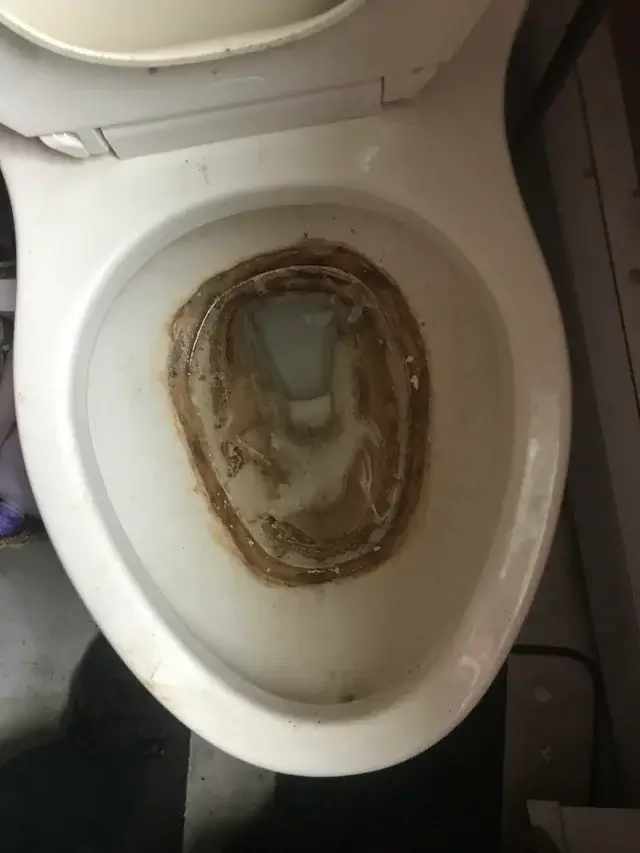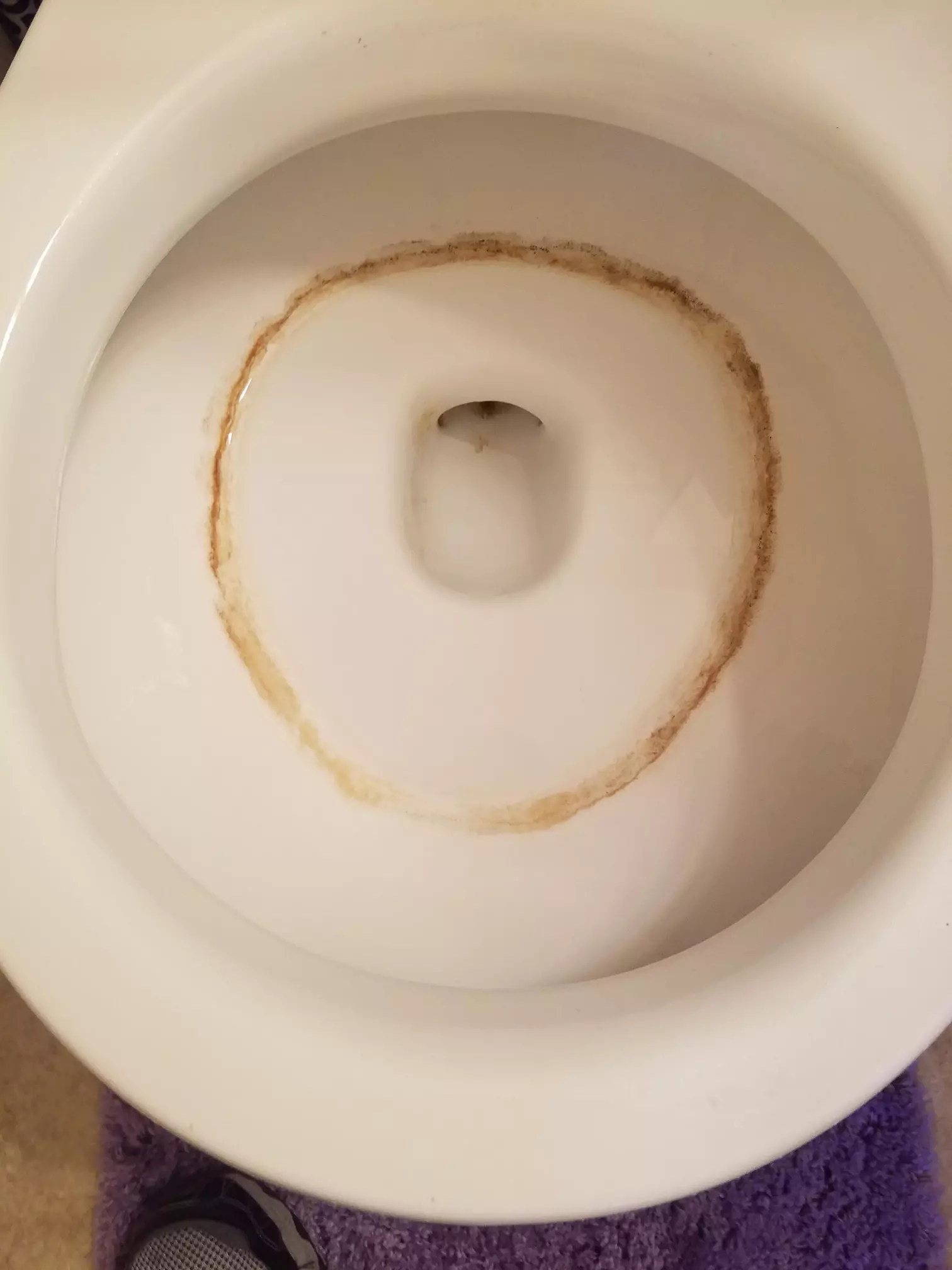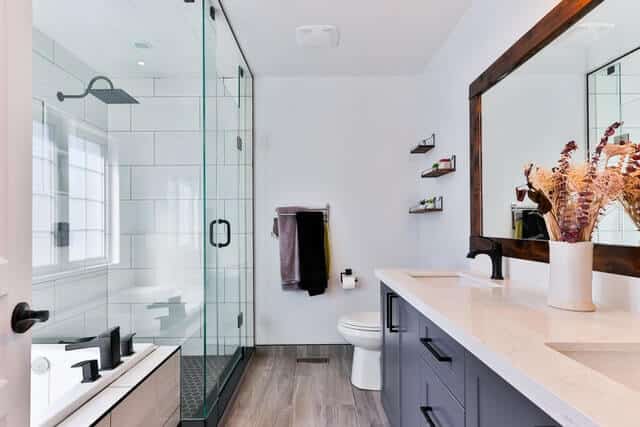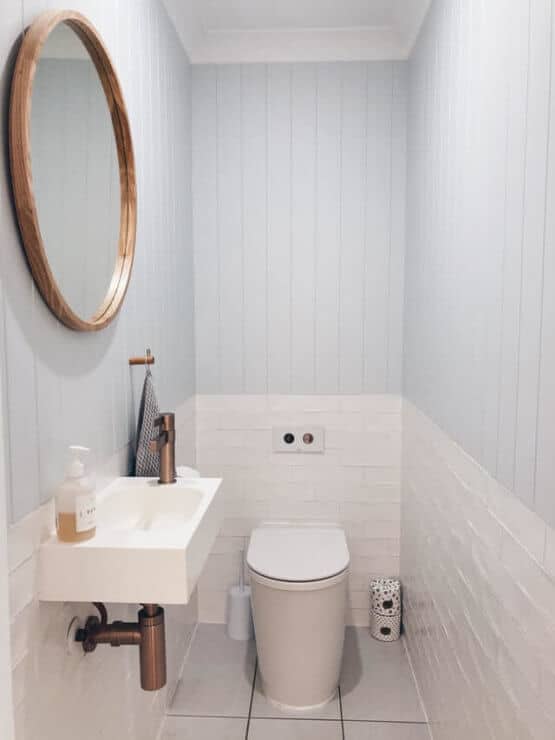Brown stains at the bottom of toilet bowls are a common household problem and frequently show up on weekly cleaning lists. However, with the right techniques and knowledge, it is possible to effectively remove these unsightly marks and prevent their recurrence, without causing any damage to the porcelain.
With a few simple cleaning methods, these stubborn stains can be eliminated in a matter of seconds. Knowing the causes of brown stains in toilet bowls and understanding the importance of removing them is key to maintaining a hygienic bathroom environment.
Key Takeaways
- Effective removal and prevention of brown stains in toilets is achievable
- Proper cleaning methods ensure no damage to the porcelain
- Understanding the causes and importance of stain removal promotes a hygienic living space
6 Effective Methods to Eliminate Brown Stain In Bottom Of Toilet Bowl

- Vinegar Treatment
Empty the toilet bowl with a brush, pour vinegar into it, and let it sit overnight. The acidic properties of vinegar help soften and lift residue from the bottom. Scrub away any remaining stains and flush.
- Baking Soda and Coca Cola Combination
Add a few spoons of baking soda to the toilet before pouring some Coca Cola into the bowl. The mixture creates a fizzing chemical reaction that helps remove stains. Leave it for a few hours before scrubbing and flushing. Alternatively, baking soda alone can be used for less severe stains.
- Baking Soda and Salt Mixture
Put on rubber gloves and lift the toilet seat. Scrub the bowl with a toilet brush and some cleaning product. Avoid applying too much pressure and ensure all areas are covered.
Leave it for 30 minutes to an hour without flushing. Then, pour 250ml of inexpensive vinegar followed by around 200g of baking soda and another 250ml of vinegar. Scrub the stains and flush the toilet after 5 minutes. Be sure to open a window while using vinegar.
- CLR Stain Remover or Whink Rust Remover
Apply one of these products and let it sit for 15 minutes before scrubbing with a toilet brush and flushing. Both products are effective in removing brown stains.
Related: Does CLR Remove Brown Stains
- Muriatic Acid Application
With proper eye and hand protection, use 4-5 tablespoons of muriatic acid. Apply a face mask and leave the room while the acid works overnight with the lid closed.
Related: Muriatic Acid For Toilet Cleaning
- Pumice Stone or Scouring Stick Method
For extremely stubborn stains on older toilets, use a pumice stone or scouring stick as a last resort. Ensure the surface is wet to avoid scratches and use a gentle touch. Overuse should be avoided as it may damage the toilet surface.
What Leads to Brown Stains in Toilet Bowls?

Hard and soft water play a significant role in causing brown stains in toilets. Rainwater, when it passes through soft rocks, collects calcium, magnesium, chalk, and lime. The outcome of this process is hard water. Conversely, soft water has a lower concentration of dissolved materials, except for sodium.
Although hard water has essential minerals like calcium and magnesium, it is often softened due to the mineral buildup it creates. This buildup can be hard on appliances, taps, and toilets and difficult to clean over time.
Brown stains in toilet bowls emerge regularly but might not always be noticeable. Initially, limescale (calcium carbonate) manifests as a white powdery film. Without proper cleaning, limescale’s color changes from grayish to green, and eventually to brown.
The discoloration is a result of iron or manganese compounds transforming limescale to beige or orange. This process causes the brown stains to appear at the bottom of toilet bowls. By understanding the cause of these stains and maintaining regular cleaning, such unsightly marks can be prevented or minimized.
Why Is Stain Removal Crucial?
Stains in toilets are not just unsightly, they can also cause problems to your plumbing system and pose risks to your health. In this section, we’ll discuss the importance of removing stains and preventing their formation in the first place.
Strategies to Stop Brown Stain Formation in Toilets
Pathogenic bacteria can be found in toilet bowls and might even spread to bathroom sinks. By using automatic toilet bowl cleaners, you can reduce the number of these microorganisms.
Apart from the unpleasant appearance and terrible odor that stained toilets give off, the accumulation of deposits in the toilet bowl can hinder the flushing process. Removing these buildups ensures that your plumbing system functions effectively and prevents damage to your pipes due to restricted water flow.
Maintaining a regular cleaning routine is essential to prevent stains and deposits in your toilet. Here are a few practices to help you prevent long-term buildup:
- Utilize cleaning products or bleach, along with a scrubbing brush and cloth, to thoroughly clean every nook and cranny, including under the seat lid.
- Allow the cleaner to soak for a little longer in more stubborn areas.
- If the chosen cleaning product doesn’t dissolve stains and sediments effectively, experiment with different methods to find what works best for you.
- Automatic cleaners can be a lifesaver for those with busy schedules who can’t find the time to clean their toilets at least once every two weeks.
- As a side measure, baby oil can be used to remove limescale stains in the toilet bowl, showerheads, and taps as a harmless and effective option.
- Installing an iron filter in your home will help reduce the iron mineral content in the water, which contributes to the formation of brown stains.
By implementing these strategies, you’ll not only ensure a cleaner and more appealing toilet but also safeguard your plumbing system and promote a healthier environment in your bathroom.
The Ultimate Outcome
Though stains can be unpleasant, they become worse if left unaddressed. For a brown stain at the base of a toilet bowl, it’s crucial to perform thorough cleaning once a month. The methods we discussed are proven effective as they have been tested.
Keep in mind that toilets differ in quality. Opting for porcelain toilets is recommended, given their glossy finish and ease of cleaning.
Frequently Asked Questions
How to Effectively Remove Hard Water Stains from Toilets
- Use white vinegar and baking soda to dissolve and scrub away stains
- Apply a toilet cleaner containing citric acid for tougher stains
- Leave the solution on for at least 15 minutes before scrubbing
Main Reasons for Persistent Brown Stain in Bottom Of Toilet Bowl
- High levels of iron or manganese in water
- Hard water deposits leading to limescale buildup
- Rust forming due to corroded pipes
Preventing Brown Stain Formation in Toilets
- Install a water softener system to reduce mineral content
- Clean the toilet bowl regularly using white vinegar or a citric acid-based cleaner
- Consider replacing old or rusted pipes
CLR’s Effectiveness for Removing Brown Stains from Toilets
- CLR (Calcium, Lime, and Rust) remover can be effective for some cases but is not guaranteed to remove all stains caused by rust or iron deposits
Steps to Eradicate Limescale from Toilets
| Step | Description |
|---|---|
| 1 | Drain the toilet water |
| 2 | Apply limescale remover or use a vinegar-soaked cloth |
| 3 | Leave the solution on for an appropriate amount of time |
| 4 | Scrub with a toilet brush or pumice stone |
| 5 | Flush and rinse the toilet bowl several times to fully remove the dissolved limescale residue |
Brown Sludge at the Bottom of Toilets and Cleaning Solutions
- The brown sludge is often a mix of bacteria, mold or algae
- Cleaning solutions:
- Use a bleach-based toilet cleaner or hydrogen peroxide solution
- Allow the solution to sit for 15-30 minutes before scrubbing
- Regular cleaning to prevent the buildup of bacteria and organic matter

Michael Davis is a heating & plumbing expert who currently works as independent contractor in SC. He also writes for Plumbertip.
For almost 10 years he worked on various plumbing tasks across South Carolina.



